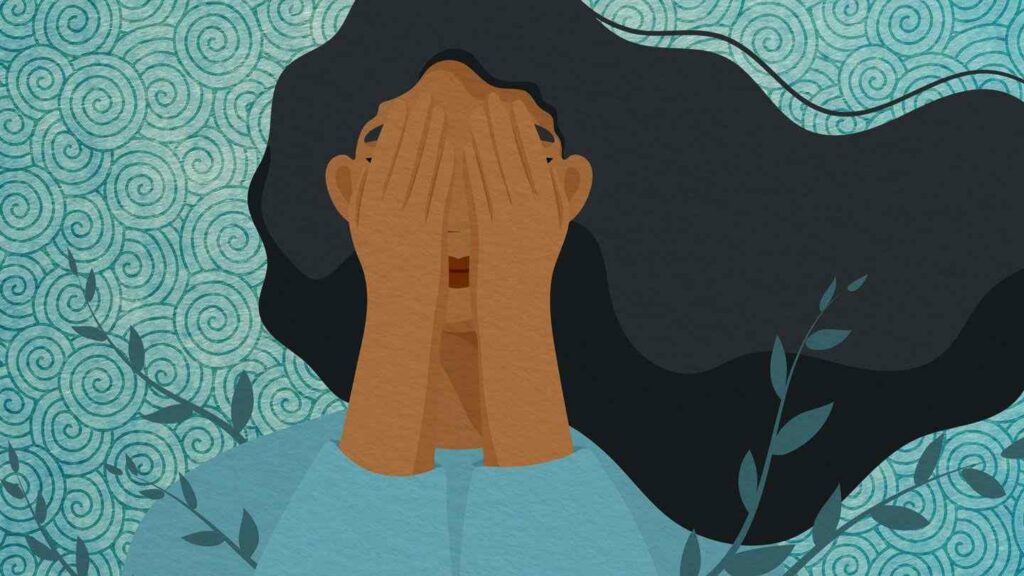The tumultuous journey of adolescence brings about significant change, growth, and challenges. One such challenge, often hidden behind closed doors and silent screens, is teenage depression. It’s not just a phase or mere moodiness. Rather, it’s a serious mental health issue that affects countless teens across the globe. Understanding this condition and knowing how to support our youth is critical. This guide aims to shed light on teenage depression therapy, provide resources for parents, guardians, and peers, and offer a beacon of hope for those feeling lost in their grip.
Contents
Understanding Teenage Depression
 Teenage depression is not merely a phase of adolescent moodiness; it is a genuine and profound mental health issue that affects many youths during their formative years. This form of depression is characterized by persistent feelings of sadness, hopelessness, and a lack of interest or pleasure in activities.
Teenage depression is not merely a phase of adolescent moodiness; it is a genuine and profound mental health issue that affects many youths during their formative years. This form of depression is characterized by persistent feelings of sadness, hopelessness, and a lack of interest or pleasure in activities.
Its roots can be multifaceted, stemming from a combination of biological changes, hormonal fluctuations, and environmental pressures. Such as school stress or bullying, and personal history factors like trauma or family genetic predisposition.
Recognizing and addressing teenage depression is crucial, as it can impact every facet of a teen’s life, from academic performance to social interactions. Even it can lead to self-harming behaviors or suicide if left untreated.
Different Therapy For Teenage Depression
Therapy plays a vital role in addressing and managing teenage depression. It provides a safe space for teens to explore their feelings, understand the root causes of their depression, and develop coping mechanisms. Here are some of the primary approaches to therapy for teenage depression:
Cognitive-behavioral therapy (CBT)
Cognitive-behavioral therapy, commonly referred to as CBT, is a structured approach that helps patients identify and challenge their negative thought patterns and behaviors. For teens, this method is particularly beneficial as it provides practical skills tailored to their unique developmental challenges. Through CBT, adolescents learn to replace negative thought cycles with healthier, positive ones. This proactive approach not only assists in alleviating current depressive symptoms but also equips teens with tools to reduce the risk of future depressive episodes.
Interpersonal Therapy (IPT)
Interpersonal Therapy, or IPT, zeroes in on the complexities of personal relationships and social settings. Adolescence is a time rife with social pressures and relational challenges, from friendships to familial ties. IPT assists teens in navigating these interpersonal dynamics, addressing any difficulties or misunderstandings that may contribute to or exacerbate their depression.
Dialectical Behavior Therapy (DBT)
 Originally developed for individuals diagnosed with borderline personality disorder, Dialectical Behavior Therapy (DBT) has shown effectiveness for teens, especially those exhibiting self-harm behaviors or suicidal tendencies. DBT is a nuanced approach that focuses on both acceptance and change. Core components include emotion regulation, distress tolerance, mindfulness, and interpersonal effectiveness, allowing teens to process emotions and develop coping mechanisms more healthily.
Originally developed for individuals diagnosed with borderline personality disorder, Dialectical Behavior Therapy (DBT) has shown effectiveness for teens, especially those exhibiting self-harm behaviors or suicidal tendencies. DBT is a nuanced approach that focuses on both acceptance and change. Core components include emotion regulation, distress tolerance, mindfulness, and interpersonal effectiveness, allowing teens to process emotions and develop coping mechanisms more healthily.
Group Therapy
There’s a unique therapeutic value in shared experiences. Group therapy provides a communal space for teens to interact with their peers who face similar emotional and mental challenges. This environment can offer a sense of understanding, validation, and belonging that may be difficult to find elsewhere. Moreover, group sessions provide a platform for practicing interpersonal skills and receiving feedback in a supportive setting.
Family Therapy
Family plays a pivotal role in a teen’s life, and sometimes, family dynamics can contribute to a teen’s depressive symptoms. This therapy focuses on improving communication within the family unit, ensuring everyone understands the challenges the teen faces. By addressing familial issues, it ensures that the home becomes a supportive environment conducive to the teen’s recovery.
Psychoeducation
Knowledge is empowering. Psychoeducation demystifies depression for both the affected teen and their family. By understanding the illness, its potential causes, treatment options, and coping strategies, families can approach the situation with empathy and informed action, fostering a more supportive environment for recovery.
Art or Music Therapy
For many teens, traditional talk therapies may feel restrictive or inadequate in expressing their depth of emotion. Art or Music therapy provides an alternative, offering a creative outlet for emotional expression. Through painting, drawing, playing an instrument, or even just listening to music, teens can explore and communicate their feelings in a non-verbal, transformative manner.
Mindfulness and Meditation
Rooted in ancient practices, mindfulness, and meditation are gaining recognition in modern therapeutic settings. These techniques teach teens to be present, focusing on the current moment without judgment. By cultivating awareness of their thoughts, feelings, and surroundings, teens can manage stress, anxiety, and depressive symptoms more effectively.
Play Therapy
 Especially pertinent for younger teens or those with difficulty articulating their emotions, play therapy uses games and activities as a medium for expression. It provides a safe, non-threatening environment where adolescents can confront and process their issues indirectly, making sense of their world through play.
Especially pertinent for younger teens or those with difficulty articulating their emotions, play therapy uses games and activities as a medium for expression. It provides a safe, non-threatening environment where adolescents can confront and process their issues indirectly, making sense of their world through play.
Each therapeutic method has its merits, and what might work best for one individual may not necessarily be the optimal choice for another. It’s crucial to ensure that the selected therapy aligns with the teen’s needs and preferences, often in consultation with a qualified mental health professional.
Strategies For Building a Supportive Environment at Home
Building a supportive environment at home is essential for any individual’s mental and emotional well-being, especially for teens who are grappling with challenges like depression. Here are some strategies to create such an environment:
1. Open Communication
Establish channels for open, honest, and judgment-free communication. Encourage your teen to share their feelings, thoughts, and concerns without the fear of reprimand or dismissal. Listening is just as crucial as speaking; ensure you’re truly hearing what your teen has to say.
2. Predictable Routines
Consistent routines can provide a sense of stability and predictability. This doesn’t mean a strict regimen, but rather a balanced structure for daily tasks, meals, and bedtime.
3. Encourage Involvement
Involve your teen in decision-making processes, especially when it concerns them. This promotes a sense of responsibility, boosts their self-esteem, and makes them feel valued and respected.
4. Limit Criticism
While constructive feedback is essential, constant criticism can erode a teen’s self-confidence. Choose your battles wisely and ensure that praise and encouragement are more frequent than negative feedback.
5. Promote Healthy Outlets
Encourage activities that help release stress and emotions, such as journaling, art, music, or physical exercise. Understand what your teen enjoys and help facilitate that hobby.
6. Encourage Social Connections
Promote healthy friendships and social activities. While respecting their privacy, ensure they have opportunities to connect with peers and build social skills.
7. Celebrate Achievements
No matter how big or small, celebrate your teen’s achievements. This boosts their confidence and reaffirms their worth, motivating them to pursue their goals.
Remember, a supportive home environment doesn’t mean a conflict-free one. Disagreements are natural. The key is to approach each situation with understanding, patience, and love, ensuring that home remains a safe haven for your teen.
Finding The Right Therapy For Teenage Depression
 Finding the right therapy for teenage depression is crucial, as each individual’s needs, preferences, and circumstances can vary widely. Here’s a guide to help navigate this journey:
Finding the right therapy for teenage depression is crucial, as each individual’s needs, preferences, and circumstances can vary widely. Here’s a guide to help navigate this journey:
- Recognize the Signs: Before seeking therapy, it’s essential to recognize the signs of depression in teens. These might include persistent sadness, withdrawal from social activities, changes in sleep and appetite, declining academic performance, or talks of self-harm or suicide.
- Consult a Professional: Start with a visit to a pediatrician or primary care provider. They can rule out any physical health concerns and provide a referral to a mental health professional, such as a psychologist, psychiatrist, or therapist.
- Consider Personal Preferences: While some teens may benefit from individual sessions, others might prefer group settings. Some might resonate with talk therapies, while others find solace in expressive therapies like art or music therapy. It’s essential to involve the teen in the decision-making process.
- Assess Therapy Logistics: Practical considerations like the therapist’s location, session timings, duration, frequency, and cost can influence the choice of therapy. Ensure it’s logistically feasible and sustainable.
- Seek Therapists with Specialized Training: It’s beneficial to work with therapists who have specific training and experience in adolescent mental health. They’re better equipped to understand the unique challenges faced by teens.
- Check Compatibility: A strong therapeutic relationship significantly influences therapy’s success. It’s essential for the teen to feel comfortable and trust the therapist. Consider having a preliminary session or interview to gauge the fit.
- Review Progress Regularly: Therapy is an evolving process. Regularly assess its effectiveness and make necessary adjustments. If one approach doesn’t seem to work, don’t hesitate to explore another.
- Seek Peer and Community Support: Support groups for parents and guardians can be invaluable. Sharing experiences, challenges, and coping strategies with others can provide additional insights and resources.
Thus, finding the right therapy for teenage depression requires a combination of research, professional consultation, and personal judgment. Prioritize the teen’s well-being and comfort throughout the process.
Conclusion
In the challenging journey of adolescence, teenage depression stands out as a silent yet profound struggle many youths face. Navigating this landscape requires recognizing its intricate signs, understanding the diverse therapeutic options, and fostering a supportive home environment. By embracing open communication, seeking the appropriate professional guidance, and remaining patient and informed, parents and guardians can significantly influence a teen’s path to healing.
Remember, every step taken, no matter how small, paves the way toward a brighter, healthier future for our teens. If you are experiencing depression-related issues, Online Depression Counseling at TherapyMantra can help: Book a trial Online therapy session


